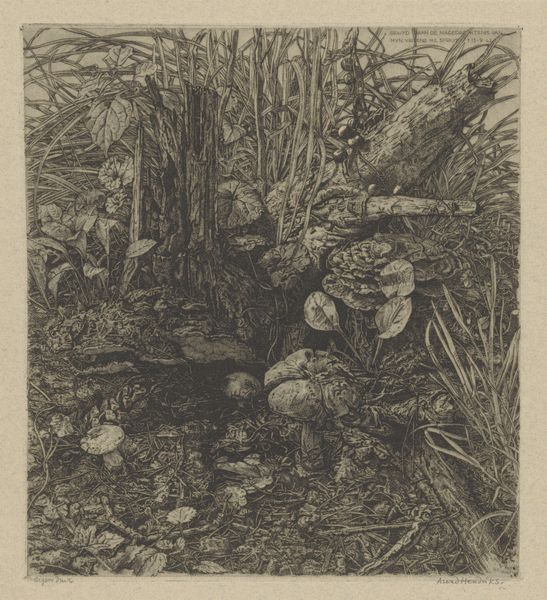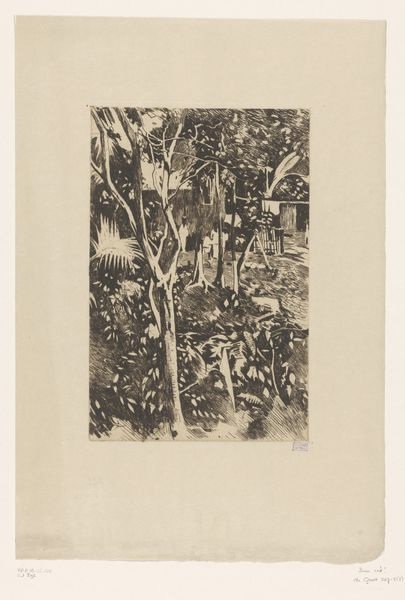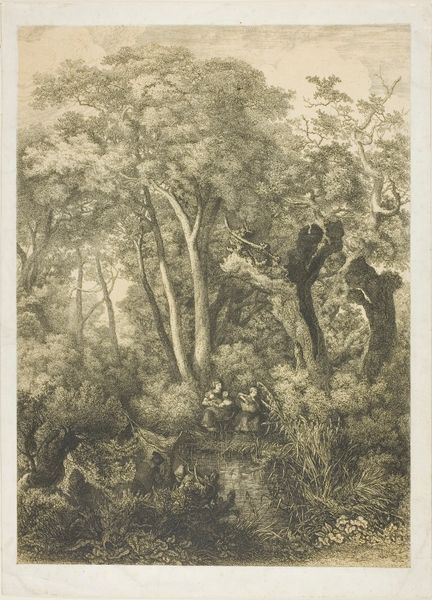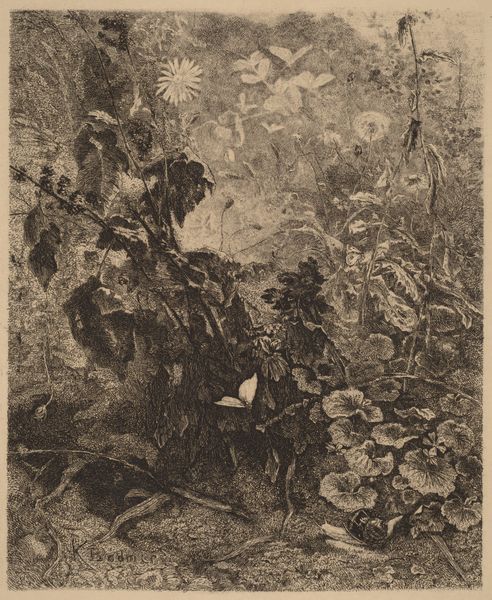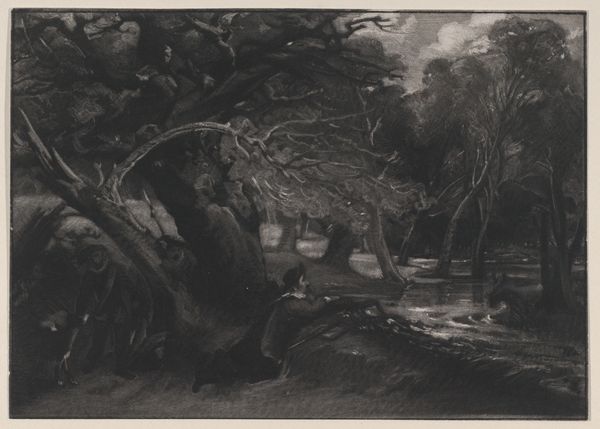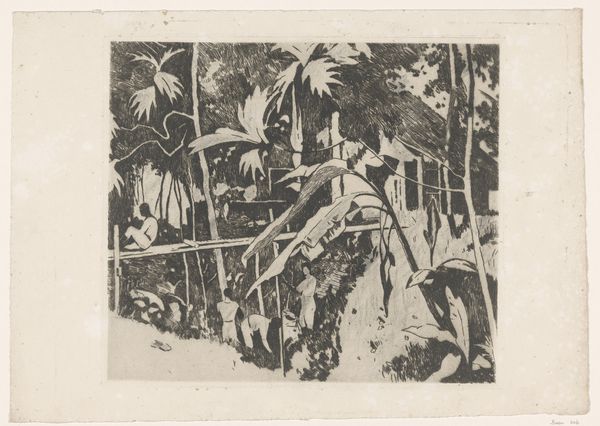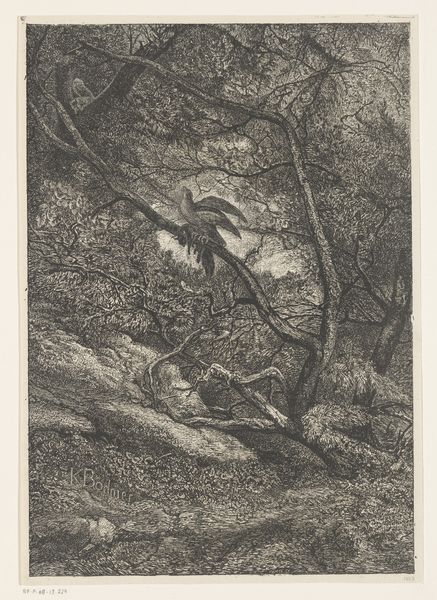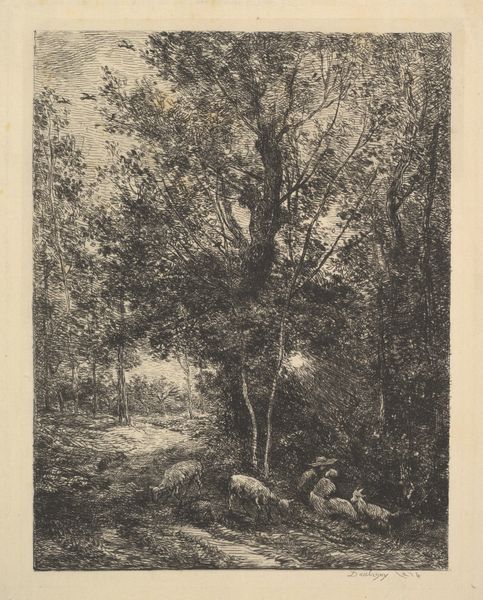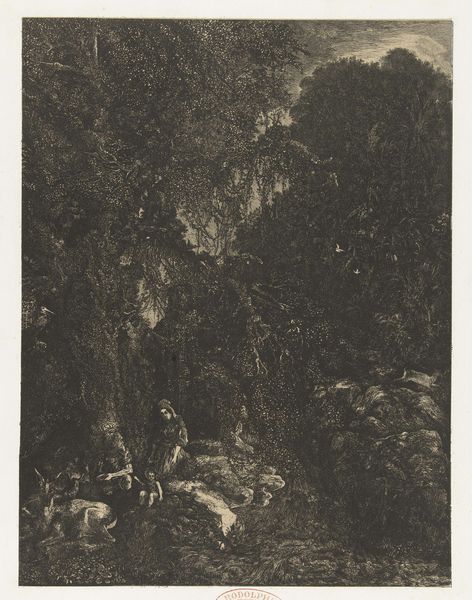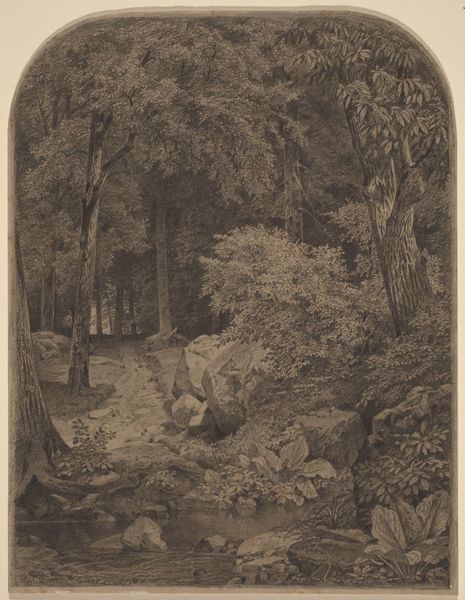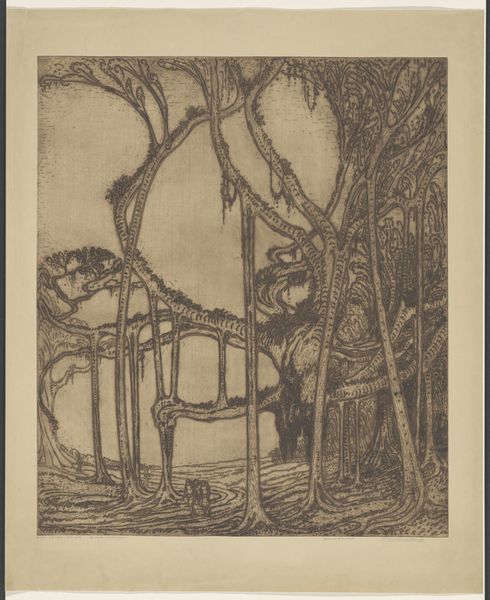
print, etching
#
art-nouveau
# print
#
etching
#
landscape
#
etching
#
linocut print
#
forest
Dimensions: height 325 mm, width 224 mm, height 425 mm, height 302 mm
Copyright: Rijks Museum: Open Domain
Curator: Theo van Hoytema's 1898 print, "Bosidylle," done as an etching, it's an amazing piece isn't it? It is remarkable to think about the relationship between labor and nature being captured here. Editor: It really is, that single-color lends itself so well to the sense of calm this piece conveys. I can almost smell the earth. How should one approach interpreting an etching like this? Curator: Well, for me, I think we need to first consider the material process. Etchings require physical labor, using acids, plates, and presses to yield many copies. What statement could the artist be making with the combination of such an industrial manufacturing process to create a scene with a natural setting? Editor: So you’re thinking that there’s more to it than just the image itself, that we should be looking at the making of the image too? Is there a tension being expressed here between nature and the industrial age? Curator: Precisely! Notice the intense detail. Van Hoytema probably invested countless hours translating his vision to the plate. Look at the labor put into a relatively simple forest scene, perhaps commenting on our changing relationship with nature due to labor? Also, how does accessibility to a manufactured print such as this compare to say, painting on canvas during this time? Editor: I see your point. It makes the image both precious because of the artistic process but widely available as prints were common. A kind of artistic democratization through reproduction! Curator: Exactly. Now consider how images like this entered the market and how many were able to afford them and put them into their homes. It changes things, right? Editor: Absolutely. Thinking about it as more than just a picture definitely broadens the possible interpretations and invites critical engagement with materiality itself. Thanks for showing me a fresh view of art! Curator: My pleasure! It’s always rewarding to explore art through the lens of its production and its relationship to the society that consumes it.
Comments
No comments
Be the first to comment and join the conversation on the ultimate creative platform.
